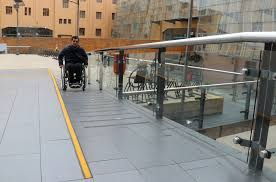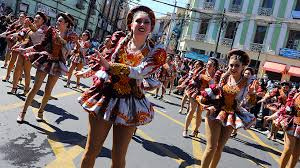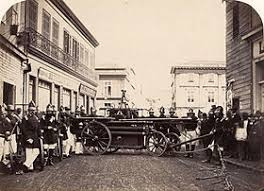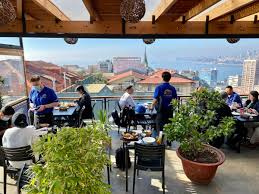How is the accessibility for people with disabilities in Valparaíso?

How is the accessibility for people with disabilities in Valparaíso?
How is the accessibility for people with disabilities in Valparaíso? Valparaíso, with its vibrant neighborhoods, historic sites, and stunning coastal views, is a city that draws visitors from around the world.
However, its hilly terrain, narrow streets, and historic architecture can pose challenges when it comes to accessibility for people with disabilities.
While the city has made strides in improving accessibility, there are still areas that require attention. Here’s an overview of what people with disabilities can expect when visiting Valparaíso.
Navigating the City’s Steep Terrain
One of the most distinctive features of Valparaíso is its steep hills, which offer breathtaking views of the city and the Pacific Ocean.
Unfortunately, these hills can make mobility challenging for people with disabilities, especially for those who use wheelchairs or have difficulty walking.
The city’s historic neighborhoods, such as Cerro Alegre and Cerro Concepción, are home to narrow, winding streets that can be difficult to navigate.
While some parts of these areas have been improved with paved walkways, other sections still have uneven surfaces and steep inclines.
For visitors with mobility impairments, exploring these areas may require extra planning. It’s advisable to map out accessible routes and be prepared for physical exertion, as even with a wheelchair or walking aids, navigating the steep hills can be demanding.
Accessible Public Transportation
Public transportation in Valparaíso includes buses, taxis, and funiculars. While buses are generally available and affordable, accessibility for people with disabilities varies.
Many of the buses in Valparaíso are not equipped with wheelchair lifts or other accessibility features.
However, the Transporte Público Valparaíso (Valparaíso Public Transport) system is making efforts to improve accessibility.
Newer buses in the fleet are designed to accommodate wheelchairs and mobility devices, but availability can be inconsistent.
Taxis are another option, and ride-sharing apps like Uber are widely available in Valparaíso, though not all vehicles are equipped with accessibility features.
If you need a specialized vehicle for a wheelchair or other mobility aids, it’s recommended to book in advance through a service that offers accessible taxis.
When it comes to funiculars, only a few are equipped to handle wheelchairs. Most of the historic funiculars, such as Ascensor Reina Victoria or Ascensor Concepción, do not have accessible features, making them unsuitable for people with mobility impairments.
Wheelchair-Friendly Routes and Attractions
Despite the city’s challenging terrain, Valparaíso does offer some areas that are more wheelchair-accessible than others.
Many of the main streets in the downtown area, such as Avenida Brasil and Plaza Sotomayor, are paved and relatively flat, making them easier to navigate for individuals with limited mobility.
There are also a number of public spaces and tourist attractions that have been designed with accessibility in mind.
For example, the Museo de Bellas Artes de Valparaíso (Museum of Fine Arts) is accessible, with ramps and elevator access.
Similarly, Plaza Sotomayor, a central square in Valparaíso, is a fairly flat area with wider walkways, making it easier for wheelchair users to move around.
For visitors interested in cultural heritage sites, some areas are easier to visit. For example, the National Maritime Museum and Palacio Baburizza offer ramp access and are more easily navigated by people with disabilities.
However, many of the older buildings in Valparaíso, due to their historic nature, may not be fully accessible.
Restaurants and Hotels with Accessible Features
Valparaíso is home to many restaurants, cafes, and bars that cater to visitors with disabilities, though the availability of accessible features can vary.
Many of the larger establishments in tourist-heavy areas such as Plaza Sotomayor or Cerro Alegre are more likely to offer accessible seating, ramps, and restroom facilities designed for people with disabilities.
When choosing a restaurant or hotel, it’s advisable to call ahead and confirm the level of accessibility, especially for those who require wheelchair access or other special accommodations.
Many boutique hotels and higher-end accommodations in Valparaíso have been designed with accessibility in mind. These include elevators, step-free entrances, and larger bathrooms suitable for wheelchair users.
For more budget-friendly options, accessibility might be limited, and visitors may need to make additional arrangements. In these cases, booking through accommodations with clear accessibility information is important.
Valparaíso’s Efforts to Improve Accessibility
In recent years, Valparaíso has been working to improve its accessibility for people with disabilities. The city has invested in better infrastructure, such as wider sidewalks and more accessible entrances to public buildings, which is a positive step toward inclusivity.
Additionally, some of the historic funiculars are being updated to provide wheelchair access. Several newer public spaces have also been built with a focus on inclusivity, including ramps and wide walkways.
However, as a historic city with many older buildings and narrow streets, Valparaíso faces challenges in fully integrating universal accessibility across all areas.
Accessibility is improving, but there is still work to be done to make the city fully inclusive for everyone.
Tips for Traveling with Disabilities in Valparaíso
If you’re planning to visit Valparaíso with a disability, a bit of pre-trip planning can make your visit much more enjoyable. Here are a few tips:
Contact accommodations ahead of time to confirm their level of accessibility. Many hotels are happy to assist with any specific needs you may have.
Be prepared for hills and slopes—if you’re traveling with a wheelchair, bring someone who can assist with navigating the steeper areas or use electric scooters or mobility aids that help with inclines.
Plan your route in advance by checking out accessible areas on maps or contacting local tourist information centers for up-to-date information on accessibility features.
A City on the Way to Accessibility
While Valparaíso offers stunning views, artistic culture, and rich history, accessibility for people with disabilities remains a work in progress. The city’s unique geography presents challenges, but it’s not without solutions.
For visitors with disabilities, there are still plenty of accessible areas, attractions, and services to enjoy.
The city is gradually improving its infrastructure, and with some advanced planning, Valparaíso can be an enjoyable and accessible destination for many.
Keep in mind that certain areas may require extra effort, but the effort is worth it to experience the charm of this colorful, artistic city.





Leave a Reply